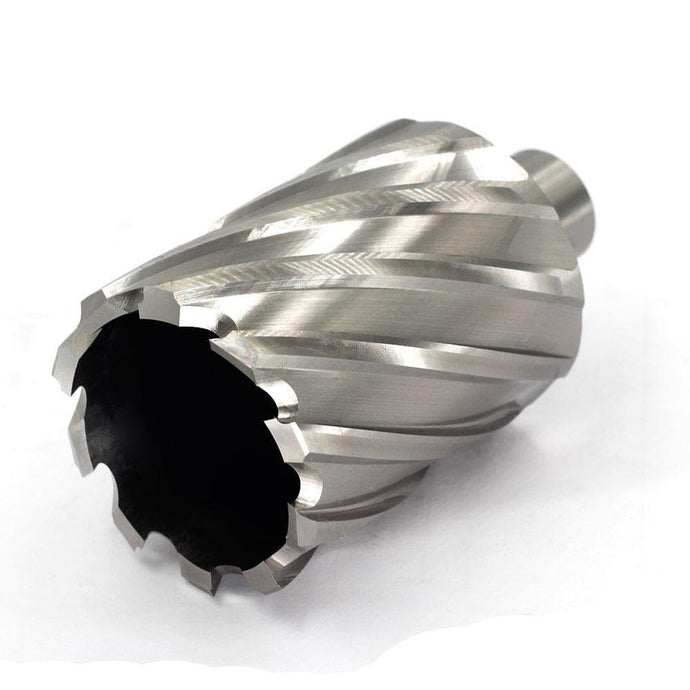| Precision Engineering: The Versatile Applications of Annular Cutters |
In the world of metalworking and fabrication, precision tools are essential for achieving accurate and clean cuts. One such tool that stands out for its efficiency and effectiveness is the annular cutter. Designed specifically for creating circular holes in a variety of materials, annular cutters offer several advantages over traditional drilling methods. Understanding what an annular cutter is used for can illuminate its vital role in various industries and applications.
Annular cutters are primarily utilized for cutting holes in metal, making them a staple in industrial settings. Unlike standard drill bits that remove material from the entire circumference, annular cutters feature a hollow design with teeth located only along the outer edge. This unique construction allows them to create a ring-shaped hole, removing only the perimeter while leaving a solid core intact. This design not only reduces waste but also improves the cutting process, resulting in cleaner edges and less need for secondary finishing.
One of the most common applications for annular cutters is in the fabrication and assembly of steel structures. In industries such as construction, automotive, and aerospace, annular cutters are employed to create precise holes for bolting, riveting, and fastening components together. The ability to produce accurately sized holes is crucial for ensuring the structural integrity and safety of any assembly. This precision is particularly vital when working with thick materials, where traditional drill bits may struggle to provide consistent results.
Another significant use of annular cutters is in plumbing and HVAC installations. When installing pipes or ductwork, professionals need to drill precise holes through walls, floors, and ceilings. Annular cutters excel in these scenarios by offering the capability to cut through steel, aluminum, and other metals with ease. Their efficiency allows plumbers and HVAC technicians to complete installations quickly while maintaining high standards of accuracy. This advantage is especially beneficial in commercial applications, where time and precision are paramount.
In addition to these applications, annular cutters are increasingly being used in the manufacturing of machinery and equipment. In production environments, where components require precise fittings, the use of annular cutters can significantly enhance workflow and efficiency. By providing clean cuts, these tools help reduce the risk of misalignments during assembly, which can lead to costly rework and delays. The reliability and performance of annular cutters make them ideal for high-volume production settings.
Annular cutters also play a crucial role in metalworking repairs and maintenance. When machinery breaks down or components wear out, precise hole drilling is often required to replace parts or perform upgrades. Annular cutters can facilitate this process by allowing maintenance professionals to make quick and accurate modifications, ensuring that machinery can return to operation with minimal downtime. This capability is especially valuable in industries where machinery plays a critical role in production and efficiency.
The versatility of annular cutters extends beyond metalworking. They are also employed in woodworking and construction applications. For instance, annular cutters can be used to create holes for dowels, screws, and other fasteners in various woodworking projects. The clean and precise cuts they provide are essential for achieving strong joints and connections, enhancing the overall quality of the finished product. This adaptability makes annular cutters valuable tools for both professional woodworkers and DIY enthusiasts alike.
Moreover, the efficiency of annular cutters translates to cost savings in both materials and time. By removing less material during the cutting process, they minimize waste and reduce the overall energy required for operations. This advantage is particularly important in environmentally conscious manufacturing environments where reducing waste is a priority. The ability to make efficient cuts also means that operators spend less time drilling and more time focusing on the assembly and finishing processes.
When utilizing annular cutters, proper technique and equipment are essential for achieving optimal results. These tools are typically used with magnetic drills or specialized drilling machines that can accommodate their unique cutting action. Operators should ensure that the cutter is securely attached and that the workpiece is adequately supported to prevent movement during the cutting process. Maintaining a steady and controlled approach while drilling is key to achieving the desired precision and finish.
In conclusion, annular cutters serve a diverse range of purposes across multiple industries, primarily excelling in metalworking applications. Their unique design and ability to create clean, precise holes make them invaluable for fabrication, assembly, plumbing, and maintenance tasks. Whether in a bustling industrial setting or a woodworking shop, annular cutters enhance efficiency, reduce waste, and contribute to the overall quality of projects. As the demand for precision in manufacturing and construction continues to rise, the annular cutter will undoubtedly remain an essential tool for professionals seeking to achieve excellence in their work.

|
|
|


